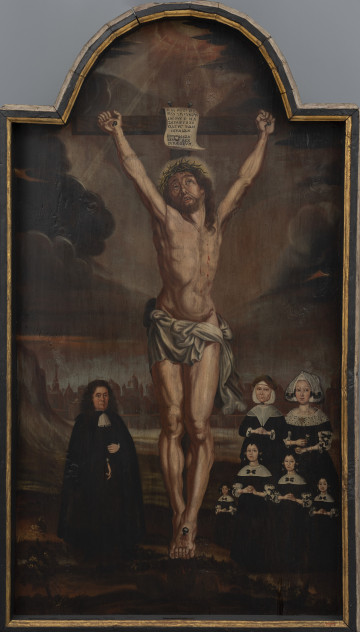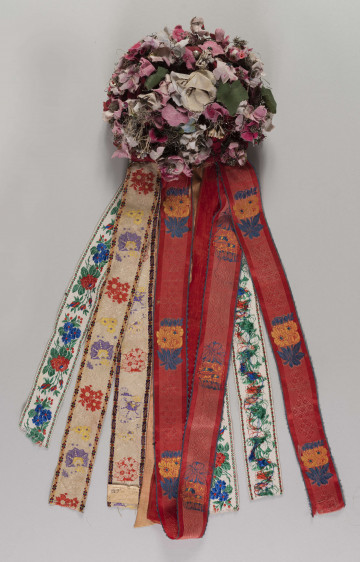
Epitaph with the scene of the Crucifixion
circa 1650 — 1700
National Museum in Szczecin
Part of the collection: Material culture of West Pomerania
The cap on show is a piece of women's clothing from the Mönchgut peninsula on the south-eastern part of the German island of Rügen. The peninsula's location, with its many bays and cliffs, meant that for centuries the area remained geographically and culturally isolated, and the locals mainly worked as fishermen. Nowadays, with its exceptionally interesting landscape, it is primarily tourism that provides a source of income for the locals. Even in the 19th century, the specific location of the peninsula defined the entire life of the residents. One of the distinctive features of this cultural enclave was the garb, still worn at the beginning of the 20th century, which was a rarity in Germany. One interesting feature was the women's headdress. Before putting it on, the Mönchgut woman washed her hair once a week on Saturday, braided it and put it up in a bun. She would then place a headband she had made herself using a crochet hook and pull it tight so that all her hair was thoroughly wrapped. Only one flat curl was allowed to escape from underneath the cap, which was usually smeared with lard to make it stiff. The headdress was essentially made up of two elements: a small white cloth cap and a top cap made of black wool. The outer cap, which basically resembled a hat, was stiffened with a layer of thick material so that it lay firmly on the head and was not tied under the chin. It had ribbons affixed to the back. The black satin band sewn around the head of the cap shows that it belonged to a married woman. Regardless of season and marital status, Mönchgut women wore such headgear at all times of the year and did not even take it off at home. The exhibit at the National Museum in Szczecin was part of the collection of the Pommersches Landesmuseum in Stettin (1927-1945) before the Second World War. Iwona Karwowska
Author / creator
Object type
mobcap
Technique
hand sewing, homemade production
Material
wool fabric, flax canvas, satin ribbon
Origin / acquisition method
acquisition
Creation time / dating
Creation / finding place
Owner
Muzeum Narodowe w Szczecinie
Identification number
Location / status

circa 1650 — 1700
National Museum in Szczecin

1870 — 1920
National Museum in Szczecin

1901 — 1920
National Museum in Lublin
DISCOVER this TOPIC
National Museum in Lublin
DISCOVER this PATH
Educational path